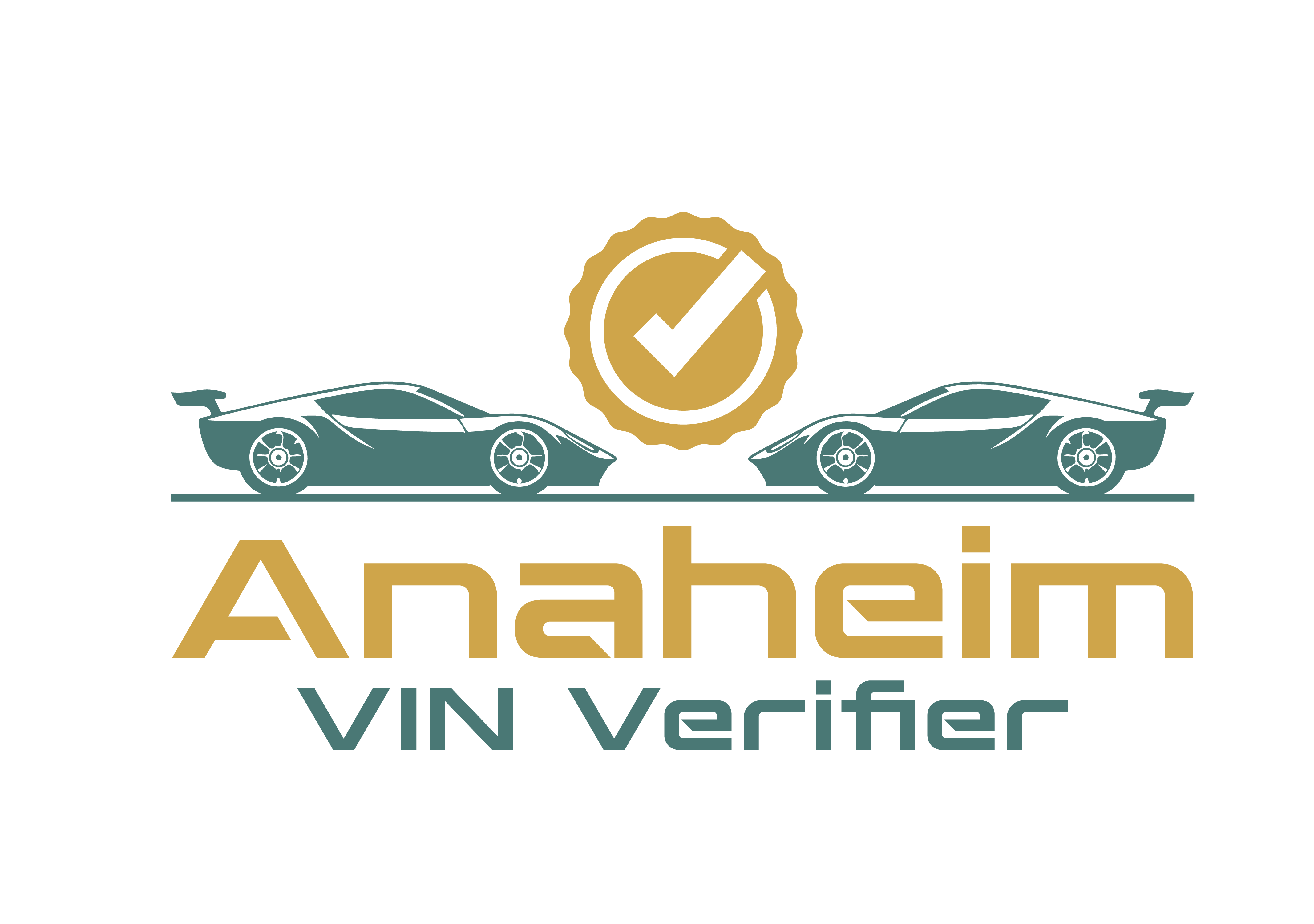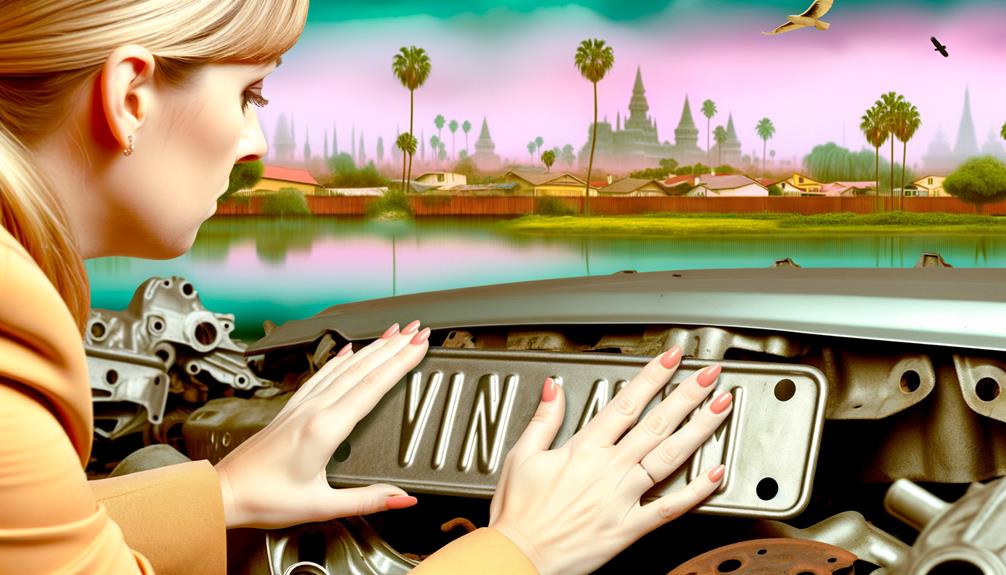If you're in Anaheim and dealing with a salvage vehicle, you'll need to understand the pivotal role of a VIN verifier in the process. You'll find that securing a DMV-approved verifier isn't just a formality; it's a critical step to ensure your vehicle's identification numbers align with official records. Gathering your documents might seem straightforward, but the nuances of what exactly is required can present unexpected challenges. What's more, the outcome of this verification influences your next steps profoundly. How you navigate this will impact both the legality and the ease of getting your vehicle back on the road. What are the potential pitfalls, and how can you avoid them?
Understanding VIN Verification
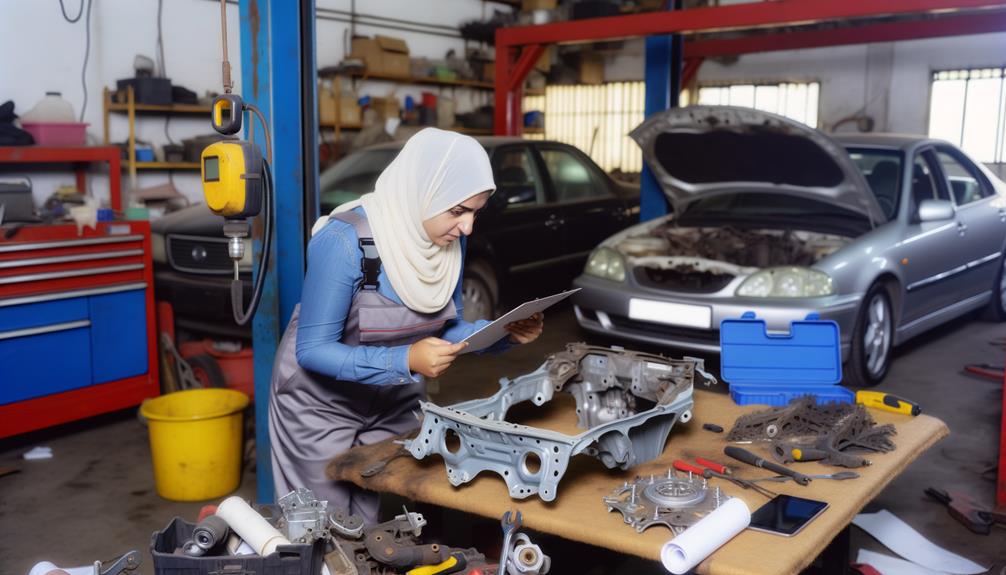
To ensure the legitimacy of your vehicle's credentials, understanding VIN verification is crucial. This mandatory physical inspection, required by the California DMV, ensures that the Vehicle Identification Number (VIN) on your vehicle aligns with its title and registration documents. It's a vital step to maintaining your freedom to drive without legal hassles.
The process is documented on a REG31 form, where licensed vehicle verifiers record essential details like the vehicle's year, make, model, and the location of the VIN. Remember, these verifiers can't inspect revived salvage vehicles or those labeled as junked. This limitation is crucial in ensuring the accuracy and safety of the inspection.
VIN verification serves as a safeguard. It helps prevent fraud and theft by confirming that the unique VIN matches DMV records, securing your legal ownership. It's particularly necessary for vehicles without California records or those being transferred from out of state. This process supports accurate state vehicle registrations, keeping your vehicle's history clear and your ownership undisputed. So, embrace VIN verification as a critical step to protect your vehicle and your freedom on the road
Salvage Vehicle Criteria
Salvage vehicles, defined by California law as those deemed a total loss by insurance companies, present unique challenges and restrictions. If you're embarking on reviving one, it's crucial you understand that typical VIN verification avenues aren't open to you. Instead, salvage vehicles require a specialized inspection process led by the California Highway Patrol (CHP) before you can even think about registration efforts. This rigorous inspection ensures your vehicle meets safety standards and is roadworthy again. To navigate this journey, you'll need to provide detailed documentation about your vehicle's history. This includes the original salvage title which shows that your vehicle was indeed classified as a total loss, and proof of repairs to demonstrate that it's been sufficiently restored. Beyond this, DMV Solutions may offer alternative options for managing your registration and compliance requirements, ensuring your vehicle adheres to state regulations. Remember, these documents are your ticket to moving forward in the process. Licensed VIN verifiers can't inspect your revived salvage vehicle. This role is exclusively reserved for the CHP, highlighting the importance of their approval in your journey to reclaim your vehicle's integrity. Once you've passed this hurdle, the path to obtaining a new salvage title becomes clearer, marking a significant milestone in your vehicle's comeback story
Choosing a VIN Verifier
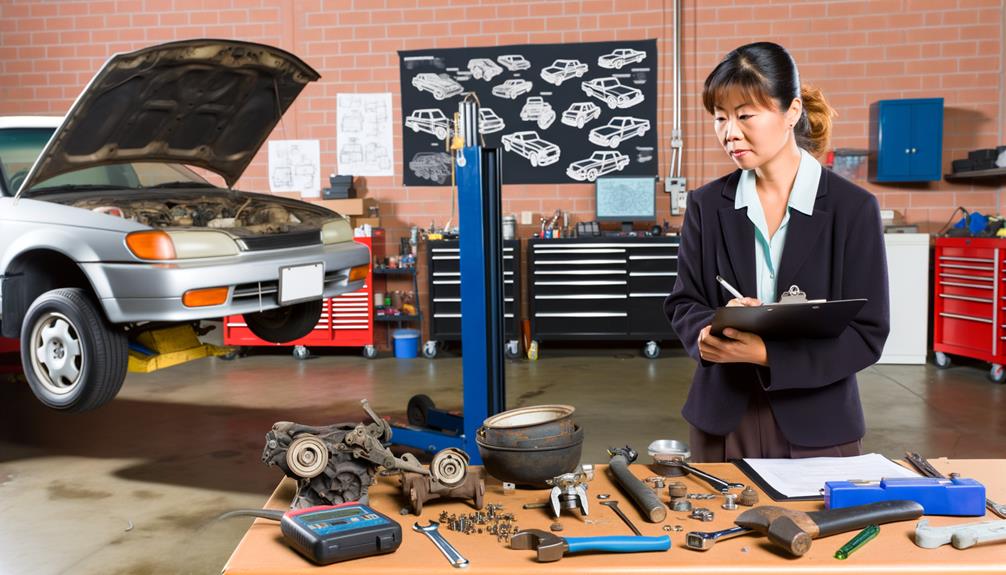
Navigating the complexities of salvage vehicle inspections requires selecting a DMV-approved VIN verifier who understands the specific requirements and regulations. When you're choosing a verifier in Anaheim, you've got to ensure they're not only authorized but also have the expertise to handle salvage vehicles. Remember, not all verifiers are permitted to inspect these types of vehicles, so it's crucial to pick the right one.
First off, make sure your verifier is on the list of DMV-approved verifiers. These professionals are the only ones cleared to manage the inspection of revived salvage vehicles. This isn't just about following the rules—it's about ensuring that the verification process goes smoothly without unnecessary delays or complications.
You should also consider the costs and operational hours of your chosen verifier. Prices and schedules can vary widely, so look for someone who offers transparency with fees and flexible hours that suit your timetable. After all, you don't want to be caught off-guard by hidden costs or find yourself stuck because the verifier isn't available when you need them.
Choosing the right VIN verifier doesn't just comply with regulations—it sets you free from potential headaches and keeps your focus on getting back on the road.
Documentation Requirements
After selecting the right DMV-approved VIN verifier, you'll need to gather the necessary documents to proceed with the verification of your salvage vehicle. First, ensure you have the original title or a certified copy of your vehicle's registration. This is your proof of ownership and a critical piece of the puzzle in VIN verification for your salvage vehicle.
You'll also need your state-issued ID for identity confirmation. This step is crucial to ensure that you're the legitimate owner or authorized representative. Depending on your vehicle type and what you plan to use it for, you might need a smog certification or a California Weight-master Certificate. These documents are not just formalities; they're your ticket to a smoother verification process.
Inspection Process Details
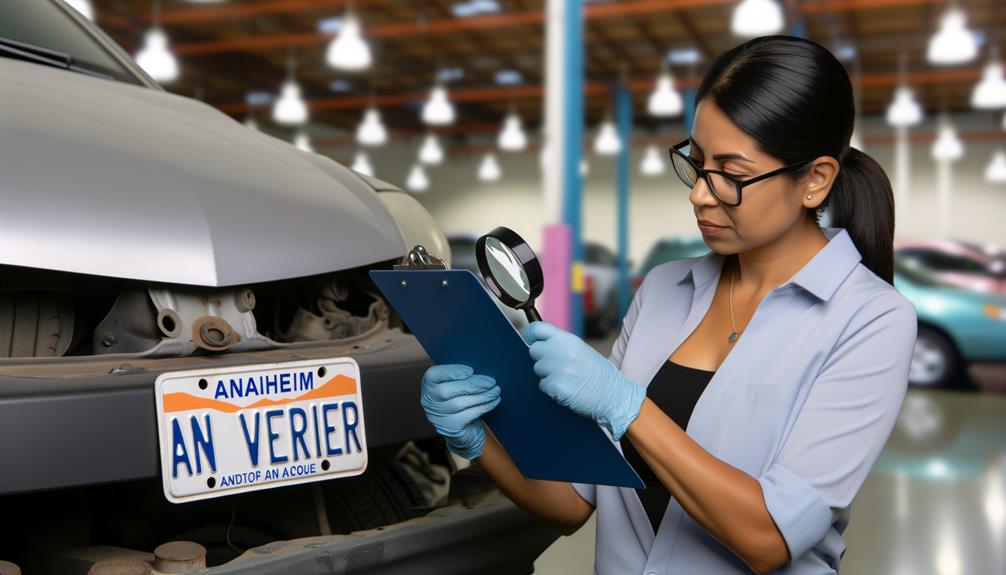
To ensure your salvage vehicle complies with California state regulations, the inspection process must begin by verifying the vehicle's VIN using the REG 31 form. This step is crucial as it ties your vehicle's identity to its legal documentation, ensuring everything's above board.
During this thorough inspection, a certified VIN verifier will check that the VIN on your vehicle matches the one on your documents. It's not just about checking the numbers; they'll also document the vehicle's year, make, model, and odometer reading. These details are essential not only for compliance but to safeguard your freedom to own and operate your vehicle without legal hassles.
Remember, the inspection must occur at a designated location. You can't use mobile VIN verification services for salvage vehicles in California, so plan accordingly. The verifier will also ensure the VIN is physically intact and located in the correct spots on your vehicle. This part of the process is about more than compliance—it's about confirming the integrity of your vehicle.
Make sure to have all your documentation ready and up-to-date to smooth out this process. A bit of preparation goes a long way in ensuring your salvage vehicle is road-ready and regulation-compliant.
Legal Considerations
Understanding the legal landscape is crucial when dealing with salvage vehicles in California. You'll find that the path to registering these vehicles is strict, governed by specific state mandates to ensure safety and compliance. Unlike regular cars, salvage vehicles cannot simply pass through the hands of mobile VIN verifiers. Instead, you're required to navigate the more rigorous channels of the DMV or CHP.
Here's what you need to know: Licensed verifiers are off the table for your salvage vehicle. This restriction means that you've got to head directly to official inspection sites for a comprehensive assessment. This isn't just bureaucracy; it's about meeting California safety standards, ensuring that your revived vehicle is road-ready and environmentally sound.
Moreover, the REG31 form, a standard document for VIN verification, doesn't apply to salvage vehicles. Your journey involves a more detailed inspection process, tailored to scrutinize and approve every aspect of the vehicle's condition and history. Remember, salvage vehicles often carry legal restrictions preventing them from being registered as merely "junked."
Navigating this process demands patience and a keen attention to legal details, ensuring your freedom to drive is preserved under the golden California sun.
Costs and Fees
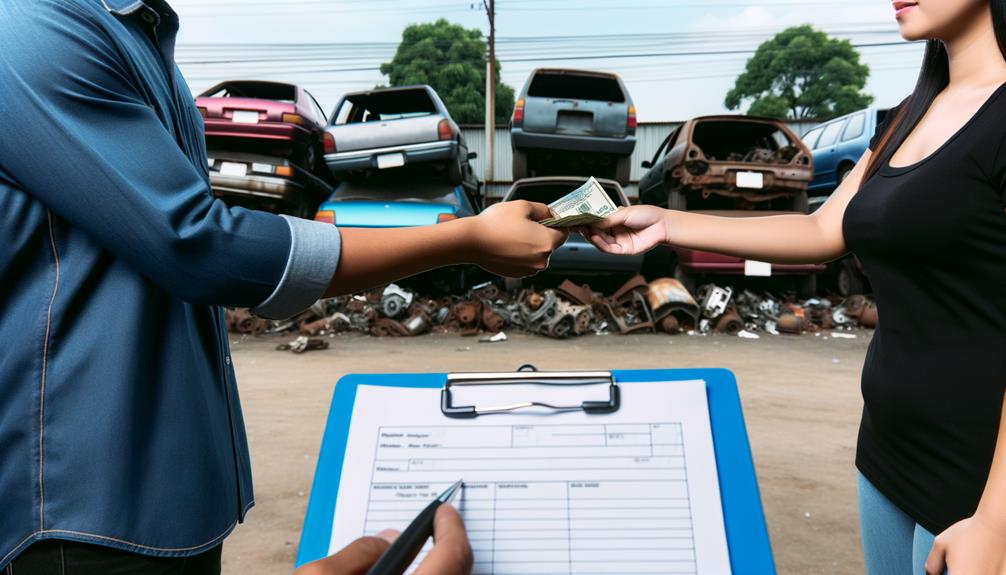
When considering the costs associated with VIN verification for salvage vehicles, it's important to note that both the DMV and the California Highway Patrol provide this service at no charge, though they require prior documentation and a DMV referral, respectively. This means you can save money while ensuring your salvage vehicle meets all legal requirements in Anaheim.
However, if you're looking for convenience, mobile services are an option, though not free like the DMV or California Highway Patrol's offerings. For instance, Quick VIN Verifications, a local provider in Anaheim, doesn't extend its mobile services to salvage vehicles, which keeps their specialized service cost at a premium for non-salvage types. This might push you to consider the in-office option or the free services provided by the state entities if you're aiming to minimize expenses.
Contacting VIN Services
Navigating the process of contacting VIN services in Anaheim involves several steps, especially when dealing with salvage vehicles. You've got to be sharp and prepared. First off, you'll need to touch base with the California DMV. Remember, only the DMV can verify your salvage vehicle at no cost, but don't just show up unannounced. Call ahead or check online to gather all the necessary documentation you'll need, including proof of ownership and a valid ID, to ensure the verification process goes smoothly.
If you're looking for more personalized service, Quick Auto Tags is another option. They're savvy with the DMV's requirements and can help streamline your paperwork. However, you'll need to contact them directly to hash out the details specific to your situation.
Lastly, there's the California Highway Patrol (CHP), but keep in mind, this route requires a referral from the DMV. It's an extra step, but sometimes necessary. Whichever route you choose, make sure you're fully prepared with all your documents in hand. This freedom to choose your path makes navigating the process a bit easier, ensuring you're back on the road legally with minimal fuss.
